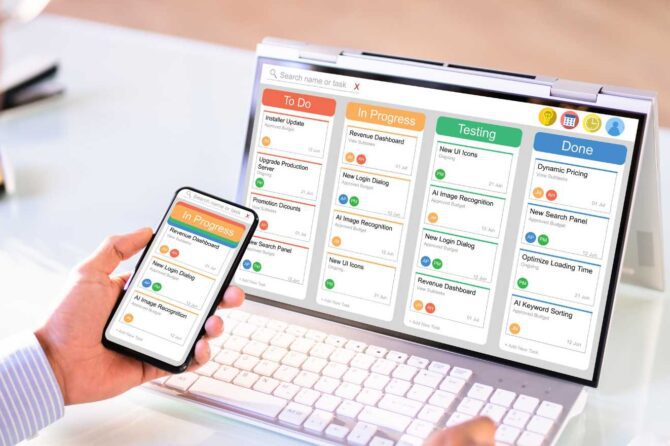Introduction
Freelancing Websites have become increasingly popular in recent years as more people seek work opportunities outside of traditional 9-5 office jobs. Freelancing provides flexible work arrangements, allowing people to be their own boss and choose when, where, and how they work. It is essentially when self-employed individuals offer their services to clients as independent contractors. The internet has been a game changer, connecting freelancers to clients across the globe. This rise in remote work has led to the creation of various freelancing websites and marketplaces that bring freelancers and clients together.
Table of Contents
Freelancing platforms (also called freelancing websites or job sites) provide a place where businesses and independent professionals can connect and collaborate remotely. These sites allow clients to post jobs, listing their project requirements, timeline, and proposed budget. Interested freelancers or virtual assistants can then apply for projects they are qualified for. Freelancing websites handle the bidding process, communication, payments and reviews. They enable freelancers to showcase their services, build an online portfolio, connect with global clients, and do business all in one place. For clients, these sites offer access to skilled professionals across many disciplines without the need to hire in-house.
Benefits of Freelancing Websites
Freelancing offers many advantages that attract people to this type of work. Some key benefits include:
- Work flexibility – One of the biggest perks of freelancing is having control over your own schedule. You can choose when, where, and how much to work. Freelancers can often set their own hours to accommodate personal obligations or preferences.
- Be your own boss – Freelancers are self-employed, so they don’t have a manager overseeing their work. This freedom allows you to operate your freelance business how you want. You can choose the projects that interest you and decline ones that don’t.
- Variety of work – Freelancing exposes you to a diverse array of projects, clients, and sectors. One week you could be designing a logo for a startup, and the next writing website copy for a Fortune 500 company. Ongoing variety keeps work exciting.
- Financial freedom – Diligent freelancers have the potential to make more money than they would working a traditional 9 to 5 job. Hard work and persistence pay off. There’s also an opportunity to raise your rates over time as you gain experience and build your reputation.
The freedom and flexibility that freelancing provides is a dream come true for many people. It offers the autonomy to control your work schedule and environment. Freelancing lets you lead the professional lifestyle that suits you best.

Top Freelancing Websites (Freelancing Platforms)
Freelancers today have many great platforms to choose from to find clients and projects. Some of the most popular freelancing websites include:
Upwork
Upwork is one of the largest freelancing websites, with over 12 million registered freelancers and 5 million registered clients. Upwork allows freelancers to create detailed profiles showcasing their skills, experience, reviews, and portfolios. Clients can post jobs, review proposals, interview candidates, and hire freelancers directly through the site. Upwork offers features like direct messaging, time tracking, escrow payment services, and feedback systems. It covers over 70 categories of freelance work.
Fiverr
Fiverr is a marketplace for finding creative, professional services starting at just $5 per job. Freelancers offer specific services called “gigs” that clients can purchase easily. Fiverr is great for freelancers who want to sell simpler, defined projects and creative services. It operates in over 100 categories like graphics, digital marketing, writing, video and more.
Freelancer
Freelancer.com has over 19 million registered users and over 3 million total jobs posted. It covers 350+ categories, mainly focused on technical, professional and creative fields. Freelancers bid on projects posted by clients, allowing clients to select the best candidate for the job. Payment processing and milestone tracking help ensure project success.
Toptal
Toptal focuses on hiring the top 3% of talent with extensive screening and evaluations. It connects the best freelance developers, designers, finance experts, product managers and other professionals with clients seeking quality, dedicated talent. Toptal offers enterprise-level service and personalized matching with no hourly bids or contests.
Guru
Guru has over 1.5 million skilled freelancers and serves over 800,000 businesses. It features an efficient booking process, secure payments, milestone tracking, and reputation systems. Guru covers writing, administrative, sales, marketing, legal, and other professional services. It provides 24/7 customer service support as well.
PeoplePerHour
PeoplePerHour allows businesses to access freelancers globally across many disciplines like web development, graphic design, marketing, admin support, writing, and more. Freelancers build custom profiles and clients post jobs for freelancers to bid on. The site has over 2 million registered freelancers and features buyer guarantees for added accountability.
This gives a high-level overview of some of the top marketplaces that freelancers can leverage to find clients and projects in 2022 and beyond. Each platform provides unique features, specialties and communities while making it easier for freelancers to tap into flexible remote work opportunities.
How Freelancing Websites Work
Freelancing websites act as a meeting place for businesses to connect with freelance professionals. They provide tools and services to facilitate the freelance working relationship from start to finish. Here’s an overview of how most freelancing websites work:
- Post Jobs – Companies or individuals with work needs can post job openings describing the project scope, required skills, timeline, and proposed budget. This allows freelancers browsing the site to find work opportunities that match their expertise.
- Browse Profiles – Freelancers create profiles highlighting their skills, experience, portfolio samples, reviews, and other credentials. Employers can search and browse freelancer profiles to find candidates qualified for their project needs.
- Hire – After browsing profiles, employers can reach out to potential candidates by sending an invite or proposal. Once terms are agreed upon, they can hire the freelancer and get the collaboration started.
- Pay Securely – Freelancing websites provide tools to ensure secure payments. Employers can place funds in escrow while work is completed, and freelancers are assured they’ll be paid per the agreed terms.
- Leave Reviews – Both clients and freelancers can leave reviews of their working relationships. This provides helpful feedback and accountability on both sides.
By providing the infrastructure to connect businesses with skilled independent talent, freelancing websites facilitate productive remote work and smooth freelance engagements from start to finish. Their tools for hiring, paying, and reviewing streamline the process for all parties.
Creating a Freelancing Profile
Your freelancing profile is your most important tool for getting hired on freelancing websites. This virtual resume allows you to showcase your skills, experience, portfolio and more to prospective clients. Here are some tips for creating an effective profile:
- Build a portfolio – Have 3-5 samples of your best work to show clients. This demonstrates you can do the job and gives them confidence in hiring you.
- List your skills – Be as detailed as possible about your expertise. Break it down into specific skills vs. general areas of competency. This helps you come up in relevant searches.
- Set your rates– Research the typical rates in your field and set competitive prices. Many platforms allow you to set hourly, project or package rates. Don’t undervalue yourself, but remain reasonably aligned with industry norms.
- Get positive reviews – If you’ve done freelance work before, get clients to write reviews that you can feature. This builds trust and social proof.
- Highlight specializations – Tailor your profile to the niche services you offer within your field. For example, a writer can note they specialize in blog writing.
- Write a strong intro – Briefly summarize your experience, skills and why you’re an excellent choice for clients seeking your services.
Taking the time to create a compelling, detailed profile is key for getting your freelancing business off the ground. Put your best foot forward and let your profile work 24/7 to attract your ideal clients.
Finding Freelance Jobs
One of the key advantages of using established freelancing websites is having access to a large pool of potential clients and projects. Rather than endlessly searching the internet for freelance gigs, these platforms allow you to efficiently browse and filter job listings relevant to your skills and interests.
Most freelance sites have powerful search and filtering tools to help match you with clients. You can search by keywords related to your expertise, such as “logo design”, “copywriting”, or “mobile app development”. Many platforms also allow filtering by pay rate, project budget, client location, project duration, and more. This allows you to quickly hone in on projects that are an ideal fit.
Once you’ve identified promising freelance job listings, it’s time to submit a proposal and bid. On most freelance platforms, clients post a project description and you respond with a bid and cover letter detailing your qualifications, experience, examples of past work, and proposed rate. Clients then review applicants and award the project to the freelancer they feel is the best fit.
The bidding and selection process allows you to showcase your skills and actively pitch for projects, rather than waiting to be found. As you build up great client feedback over time, you’ll become more competitive for coveted assignments. Eventually, repeat clients may start reaching out to you directly based on your outstanding portfolio and reputation on the platform.
Bidding strategically on quality freelance jobs that match your expertise is crucial for building your clientele and earning potential. The best freelancing websites make this process simple and efficient.
Working Successfully with Clients
As a freelancer, your clients are your lifeline. Having good working relationships with clients is essential for getting repeat business and positive reviews. Here are some tips for working successfully with clients:
- Maintain clear communication – Set expectations upfront about response times and channels you use to communicate. Be prompt in answering questions and providing updates. If delays come up, communicate proactively.
- Meet all deadlines – Never miss agreed-upon deadlines. Manage your time and workload so you can deliver work when expected. Ask for extensions early if needed.
- Manage expectations – Be clear about what deliverables you will provide and your rates/fees. Outline the review process and several revisions. Say no clearly to scope creep.
- Get feedback for improvements – Check in with clients regularly and ask for feedback after milestones. Use reviews to improve processes and exceed expectations next time.
- Be professional – Even difficult clients deserve tactful communication. Be patient, responsive, and solution-oriented. The relationship is a long-term investment.
- Go the extra mile – Deliver above and beyond your scope when you can. These efforts make clients remember you for future work.
By managing communication, expectations and timelines, freelancers demonstrate reliability. This helps build lasting professional relationships with clients that are rewarding both personally and financially.
Getting Paid as a Freelancer
One of the most important aspects of freelancing is getting paid for your work. As a freelancer, you’ll need to send invoices, receive payments, and handle any payment disputes professionally.
Invoicing Clients
- Send an invoice to the client after finishing the work or reaching a project milestone. The invoice should include your name/business name, invoice number, client name, dates, itemized list of work completed, total amount owed, and payment terms.
- Set clear payment terms, such as net 7, net 15, or net 30 days. This states the deadline for the client to pay the invoice.
- Include instructions for how the client can pay the invoice. Offer multiple payment options like bank transfer, PayPal, Venmo, etc.
- Send friendly payment reminders as invoices become due. Follow up persistently yet professionally if an invoice is past due.
Receiving Payments
- Once the client pays the invoice, send a receipt to confirm payment. Keep clear records of all payments received.
- Avoid handling large payments in cash. Preferred payment methods include bank transfer, PayPal, Apple Pay, Google Pay cards, etc. These offer records of transactions.
- Keep payment transactions separate from personal finances. Have a business bank account and credit card to keep finances organized.
Handling Payment Disputes
- Address any payment disputes promptly and professionally. Avoid escalating conflicts.
- If the client is unsatisfied with your work, offer to make reasonable revisions or compromise on the amount owed.
- As a last resort, politely share that you may need to involve a collections agency or pursue legal action for non-payment. Offer to resolve it directly first.
- Prevent disputes by setting clear expectations upfront. Have a contract, communicate frequently, and deliver high-quality work.
Getting paid properly is crucial for freelance success. Follow best practices for invoicing, receiving payments, and handling disputes ethically and effectively.
Pros and Cons of Freelancing
Freelancing offers both advantages and potential drawbacks compared to traditional employment. Here are some of the key pros and cons to weigh when considering freelancing:
Pros
- Freedom and flexibility: As a freelancer, you have the freedom to choose when, where, and how much you work. You can take time off whenever you want and work flexible hours. This freedom and flexibility allow for a better work-life balance.
- Variety: Freelancing offers the opportunity to work on different projects for different clients, rather than doing the same work day-in and day-out. The variety keeps things interesting and allows you to expand your skills.
- Be your own boss: You get to be your own boss as a freelancer. You can choose the projects and clients you want to work with. You also don’t have a manager overseeing your work.
Cons
- Inconsistent work and income: Freelance work often comes in cycles of feast or famine. You may have a flood of work some months and then little to nothing other months. This inconsistency makes it challenging to have a stable income.
- No benefits: Unlike regular employees, freelancers do not get benefits like health insurance or retirement plans from an employer. Freelancers have to pay for their own benefits.
- Complex taxes: Taxes can be complicated for freelancers. You have to pay self-employment taxes, estimated quarterly taxes, and keep very detailed records. Managing taxes takes extra administrative work.
Conclusion
Freelancing provides a unique career path for those seeking opportunity and flexibility. With talent and dedication, freelancers can build a successful business serving clients around the world. This guide has explored some of the top freelancing websites and offered tips for getting started.
The key benefits of freelancing include setting your own schedule, choosing your projects, and working from anywhere. However, freelancing requires discipline, top-notch skills, excellent client communication, and the ability to do all the administrative tasks of running a business yourself. While freelancing offers freedom, it also demands hard work and organization to thrive.
We’ve covered the best leading freelancing websites like Upwork, Fiverr, and Freelancer that connect independent professionals with clients. Creating an appealing profile, providing competitive bids, and delivering 5-star service are essential to building your reputation on these freelancing websites. Tracking your time, getting contracts in writing, and invoicing correctly are also key skills.
Freelancing can be an incredibly rewarding path for those with the talent, persistence, and self-motivation required. While it has its challenges, the ability to work flexibly, on projects you enjoy, with clients worldwide makes freelancing an exciting and empowering career choice. With preparation and dedication, you can succeed as an independent freelance professional. To learn more about freelancing What is freelancing and how to become a freelancer?




